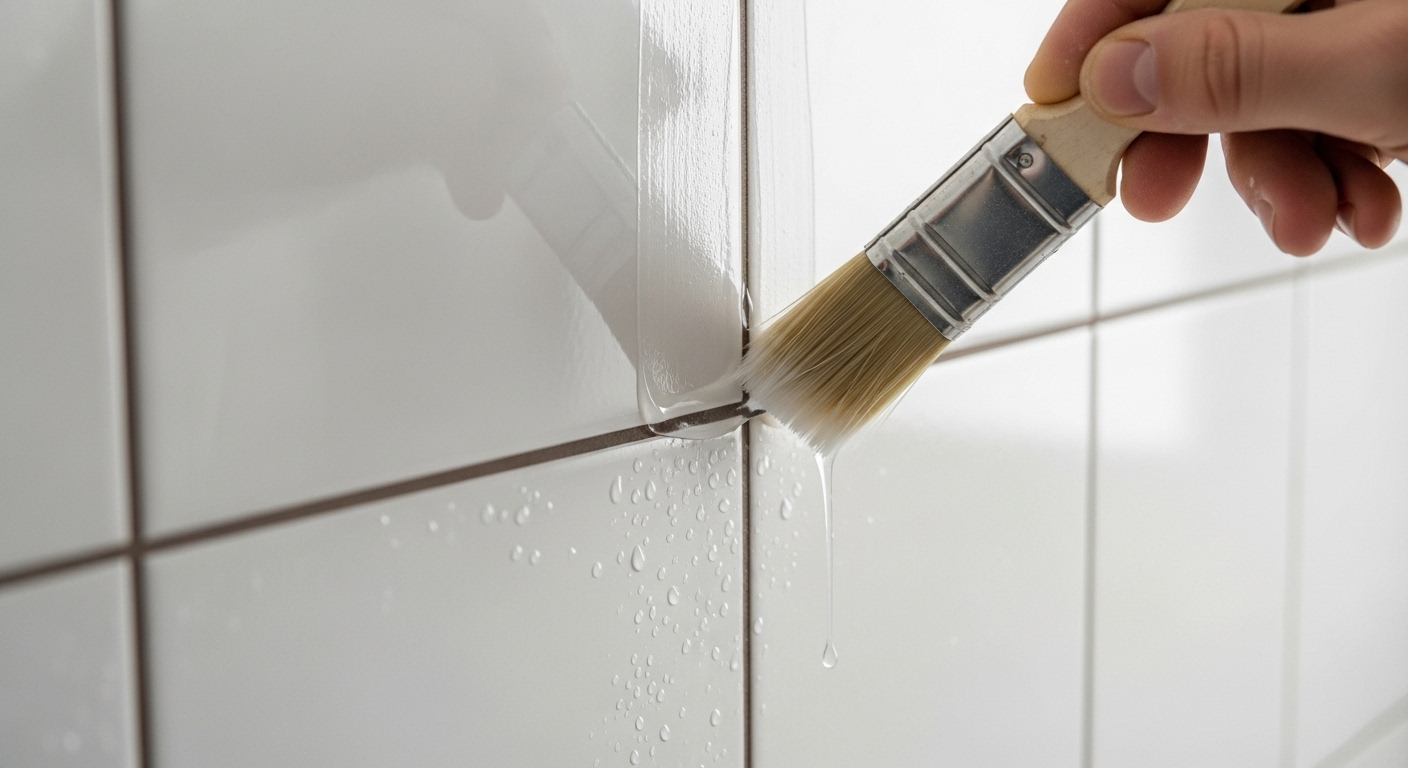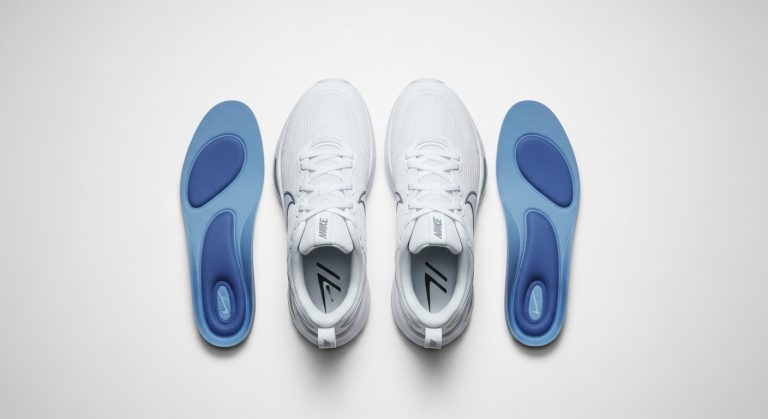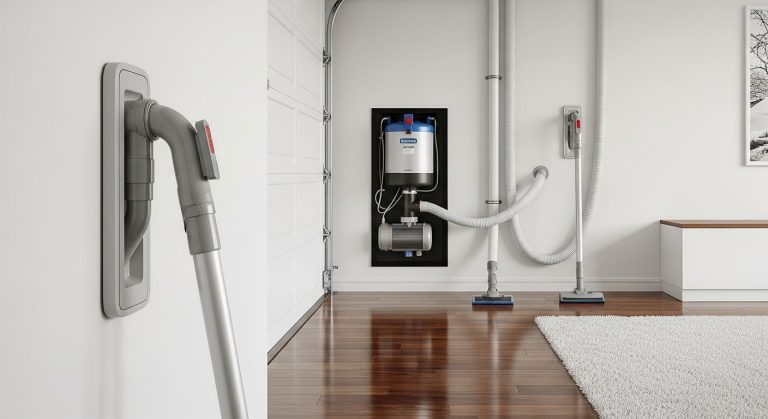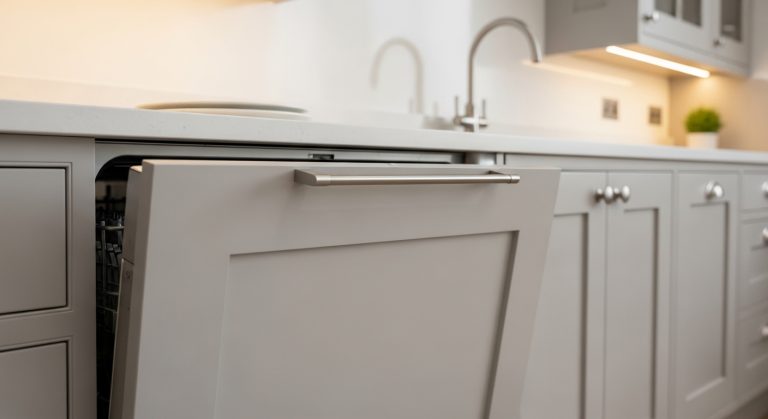Best Grout Sealers: Ultimate Protection Guide 2026
Your grout lines are under constant attack from moisture, dirt, and stains. Without proper protection, they’ll deteriorate faster than you think. That’s where quality grout sealers come to the rescue.
The best grout sealers create an invisible barrier that repels water, prevents stains, and extends your grout’s lifespan significantly. Top-performing sealers offer penetrating protection that keeps your tiles looking fresh for years.
This comprehensive guide reveals everything you need to know about selecting the perfect grout sealer for your specific needs. You’ll discover professional techniques, application methods, and maintenance tips that will transform your tiled surfaces. Let’s dive into the world of superior grout protection.
Key Takeaways:
- Choose the Right Sealer Type: Penetrating sealers work best for natural stone and maintain grout’s original appearance, while topical sealers offer superior stain resistance for high-traffic areas. Hybrid sealers combine both benefits for comprehensive protection.
- Proper Surface Preparation is Critical: Thorough cleaning and complete drying are essential before application. New grout needs 24-48 hours curing time, and damaged grout must be repaired before sealing for optimal results.
- Application Timing Matters: Apply sealers in ideal conditions (65-75°F with low humidity) and avoid extreme weather. Morning application often provides the best environmental conditions for proper curing and effectiveness.
- Quality Sealers Offer Long-Term Value: Professional-grade products may cost more initially but provide 10-15 years of protection compared to 3-5 years for budget options. Deep penetration (at least 1/8 inch) ensures comprehensive moisture protection.
- Regular Maintenance Extends Sealer Life: Use pH-neutral cleaners for weekly maintenance and perform water drop tests annually to assess sealer condition. Immediate spill cleanup prevents staining and sealer degradation.
- Resealing Frequency Varies by Usage: High-traffic areas need resealing every 1-2 years, while low-use areas can go 3-5 years between applications. Bathroom shower areas may require annual sealing due to constant moisture exposure.
- Avoid Common Application Mistakes: Never over-apply sealer or skip surface preparation steps. Multiple thin coats provide better protection than single thick applications, and compatibility testing is essential when sealing over existing products.
Grout Sealers and Their Importance
Grout sealers are specialized protective coatings designed to penetrate porous grout lines and create a barrier against moisture, stains, and contaminants. These products are essential for maintaining the integrity and appearance of your tiled surfaces.
Unsealed grout acts like a sponge, absorbing everything from water to coffee spills. This absorption leads to discoloration, mold growth, and structural damage over time. Professional contractors always recommend sealing grout within 24-48 hours of installation.
Types of Grout Sealers
Penetrating sealers work by soaking deep into the grout’s porous structure. They don’t change the grout’s appearance but provide excellent protection from within. These sealers are ideal for natural stone tiles and cement-based grouts.
Topical sealers create a protective film on the grout surface. They offer superior stain resistance but may alter the grout’s appearance slightly. These work exceptionally well in high-traffic areas and commercial applications.
Hybrid sealers combine both penetrating and topical properties. They provide comprehensive protection while maintaining the grout’s natural look. These represent the latest advancement in grout sealing technology.
Benefits of Using Quality Grout Sealers
Properly sealed grout resists water penetration by up to 95%, preventing costly water damage behind tiles. This protection is crucial in bathrooms, kitchens, and other moisture-prone areas.
Stain resistance becomes dramatically improved with quality sealers. Spills that would normally penetrate and permanently stain grout simply wipe away. This makes cleaning significantly easier and more effective.
The longevity of your grout increases substantially when properly sealed. Unsealed grout may need replacement within 3-5 years, while sealed grout can last 10-15 years with proper maintenance.
Key Features to Look for in Grout Sealers
Penetration Depth and Coverage
Deep penetration is crucial for effective grout sealing. Quality sealers should penetrate at least 1/8 inch into the grout structure. This depth ensures comprehensive protection against moisture infiltration.
Coverage area varies significantly between products. Professional-grade sealers typically cover 75-100 square feet per quart, while consumer products may only cover 50-75 square feet. Calculate your needs carefully before purchasing.
The molecular size of the sealer affects penetration ability. Smaller molecules penetrate deeper, providing superior protection. Look for sealers specifically designed for your grout type and porosity level.
Drying Time and Curing Process
Fast-drying formulas allow for quicker project completion. Most quality sealers dry to the touch within 1-2 hours, but full curing takes 24-48 hours. Plan your sealing project accordingly.
Temperature and humidity significantly affect drying times. Ideal conditions are 65-75°F with low humidity. Avoid sealing during extreme weather conditions for optimal results.
Some sealers require multiple coats for maximum protection. The first coat penetrates deeply, while subsequent coats build surface protection. Follow manufacturer recommendations for best results.
Top Categories of Grout Sealers
Silicone-Based Sealers
Silicone-based formulas offer excellent water repellency and flexibility. They move with natural building expansion and contraction, preventing cracks and failures. These sealers work exceptionally well in high-moisture environments.
The breathable nature of silicone sealers allows trapped moisture to escape while preventing new moisture from entering. This balance is crucial for preventing mold and mildew growth behind tiles.
Application ease makes silicone sealers popular among DIY enthusiasts. They typically require only one coat and have forgiving application windows. Clean-up is straightforward with soap and water.
Acrylic-Based Sealers
Acrylic formulations provide excellent stain resistance and durability. They create a slightly harder surface than silicone sealers, making them ideal for high-traffic areas like kitchen backsplashes and entryways.
These sealers offer superior adhesion to various grout types, including epoxy and cement-based formulas. They bond chemically with the grout surface, creating long-lasting protection.
Color enhancement is a notable feature of many acrylic sealers. They can slightly darken grout lines, creating a more uniform and attractive appearance. This effect is particularly beneficial for natural stone installations.
Fluoropolymer Sealers
Fluoropolymer technology represents the premium tier of grout sealers. These advanced formulas provide exceptional stain resistance and longevity. They’re commonly used in commercial applications requiring maximum protection.
The chemical resistance of fluoropolymer sealers is outstanding. They repel oils, acids, and alkaline substances that would penetrate other sealer types. This makes them ideal for restaurant kitchens and industrial settings.
Longevity is the standout feature of fluoropolymer sealers. They can provide effective protection for 10-15 years with proper maintenance. While initially more expensive, their durability offers excellent long-term value.
Application Techniques for Maximum Effectiveness
Surface Preparation Requirements
Thorough cleaning is essential before sealer application. Remove all dirt, soap residue, and previous sealer remnants. Use a pH-neutral cleaner and allow complete drying before proceeding.
Grout condition must be assessed carefully. Cracked or damaged grout should be repaired before sealing. New grout installations require 24-48 hours curing time before sealer application.
Temperature control affects sealer performance significantly. Avoid application during extreme temperatures or direct sunlight. Ideal conditions are 65-75°F with low humidity for optimal penetration and curing.
Professional Application Methods
Brush application provides the most control and thorough coverage. Use a high-quality synthetic brush to work sealer into grout lines. Apply in thin, even coats for best results.
Spray application works well for large areas but requires careful masking. Use a fine-mist sprayer and maintain consistent distance from the surface. Overspray protection is crucial to prevent tile staining.
Roller application is suitable for smooth grout surfaces. Use a small foam roller for even distribution. This method works particularly well with topical sealers on large commercial installations.
Timing and Environmental Considerations
Optimal timing for sealer application is during mild weather conditions. Avoid rainy days or periods of high humidity. Morning application often provides ideal conditions as temperatures rise gradually.
Ventilation requirements vary by sealer type. Water-based sealers need minimal ventilation, while solvent-based products require excellent air circulation. Always follow manufacturer safety recommendations.
Curing protection is crucial for sealer effectiveness. Avoid water exposure for the specified curing period. Use temporary barriers if necessary to protect freshly sealed areas.
Maintenance and Longevity Tips
Regular Cleaning Protocols
pH-neutral cleaners are essential for maintaining sealed grout. Acidic or alkaline cleaners can break down sealer protection over time. Use products specifically designed for sealed surfaces.
Weekly cleaning with appropriate products maintains sealer effectiveness. Focus on removing surface contaminants before they can penetrate. Immediate spill cleanup prevents staining and sealer degradation.
Deep cleaning should be performed monthly in high-use areas. Use specialized grout cleaners that won’t compromise sealer integrity. Soft-bristled brushes provide effective cleaning without damaging the sealer surface.
Signs of Sealer Degradation
Water absorption is the primary indicator of sealer failure. Perform regular water drop tests on grout lines. If water absorbs within 5-10 minutes, resealing is necessary.
Staining susceptibility increases as sealers degrade. Notice if spills that previously wiped away easily now leave permanent marks. This indicates compromised protection requiring attention.
Color changes in grout lines may indicate sealer breakdown. Darkening or uneven coloration suggests moisture penetration. Professional assessment may be needed for extensive degradation.
Resealing Schedules and Procedures
Resealing frequency depends on usage and environmental conditions. High-traffic areas may need resealing every 1-2 years, while low-use areas can go 3-5 years between applications.
Preparation for resealing involves thorough cleaning and assessment. Remove any existing sealer residue and repair damaged grout. Surface preparation is just as important for resealing as initial application.
Sealer compatibility must be considered when resealing. Some products don’t adhere well over existing sealers. Test patches help determine compatibility before full application.
Common Mistakes to Avoid
Application Errors
Over-application is a frequent mistake that can create an unnatural appearance. Apply thin, even coats rather than heavy applications. Multiple thin coats provide better protection than single thick applications.
Inadequate surface preparation leads to poor sealer adhesion and shortened lifespan. Never skip cleaning steps or rush the preparation process. Proper preparation is 80% of successful sealing.
Weather-related mistakes include applying sealers during inappropriate conditions. Avoid high humidity, extreme temperatures, or windy conditions that can affect sealer performance.
Product Selection Issues
Wrong sealer type for specific applications leads to poor performance. Natural stone requires different sealers than ceramic tile installations. Research compatibility before purchasing.
Quality compromises often result in frequent resealing needs. Professional-grade products may cost more initially but provide better long-term value through extended protection periods.
Coverage miscalculations can leave projects incomplete or create waste. Measure accurately and account for grout porosity when estimating sealer needs.
Troubleshooting Common Sealing Problems
Uneven Coverage Issues
Streaky appearance often results from inconsistent application techniques. Use systematic application patterns and maintain wet edges to prevent overlap marks. Work in manageable sections for uniform coverage.
Missed spots become apparent after curing when water absorption varies. Thorough inspection during application prevents these issues. Use adequate lighting to identify coverage gaps.
Blotchy coloration may indicate contaminated grout or incompatible products. Clean thoroughly and test compatibility before proceeding with full application.
Adhesion Problems
Poor bonding typically results from inadequate surface preparation or contamination. Degrease surfaces thoroughly and ensure complete drying before sealer application.
Peeling or flaking indicates fundamental adhesion failure. Remove failed sealer completely and restart the preparation process. Don’t attempt to seal over failed applications.
Premature failure suggests environmental factors or product incompatibility. Assess conditions and consider alternative sealer types for problematic areas.
Frequently Asked Questions
How often should grout be sealed?
Sealing frequency depends on several factors including traffic levels, moisture exposure, and sealer quality. High-traffic areas like kitchen backsplashes typically need resealing every 1-2 years.
Bathroom installations in shower areas may require annual sealing due to constant moisture exposure. Low-traffic areas can often go 3-5 years between sealing applications.
Water drop tests provide the most accurate assessment of sealing needs. If water absorbs into grout within 5-10 minutes, immediate resealing is recommended.
Can I seal over existing grout sealer?
Compatibility testing is essential before sealing over existing products. Some sealers bond well with previous applications, while others require complete removal of old sealer.
Surface preparation becomes more critical when sealing over existing products. Thorough cleaning and light abrasion may be necessary for proper adhesion.
Professional assessment is recommended for valuable installations. Improper layering can lead to adhesion failures and costly repairs.
What’s the difference between penetrating and topical sealers?
Penetrating sealers absorb into grout pores without changing surface appearance. They provide excellent protection while maintaining the grout’s natural look and texture.
Topical sealers create a protective film on the grout surface. They offer superior stain resistance but may slightly alter the grout’s appearance and texture.
Hybrid products combine both technologies for comprehensive protection. They provide deep penetration with surface enhancement for maximum effectiveness.
How long does grout sealer take to cure?
Initial drying typically occurs within 1-2 hours for most quality sealers. However, full curing requires 24-48 hours depending on environmental conditions and product type.
Temperature and humidity significantly affect curing times. Ideal conditions are 65-75°F with low humidity for optimal curing speed and effectiveness.
Water exposure should be avoided during the curing period. Temporary protection may be necessary in areas where moisture contact is unavoidable.
Can grout sealer be removed if needed?
Sealer removal is possible but requires specific techniques and products. Chemical strippers designed for sealer removal are most effective for complete elimination.
Mechanical removal through sanding or grinding is possible but risks damaging the grout. Professional removal is recommended for valuable installations.
Replacement considerations may be more cost-effective than removal in some cases. Assess the situation carefully before deciding on removal versus replacement.
Your Path to Perfect Grout Protection
Quality grout sealers transform your tiled surfaces from vulnerable to virtually indestructible. The right sealer choice combined with proper application techniques ensures years of beautiful, low-maintenance surfaces.
Professional results are achievable with the knowledge and techniques outlined in this guide. Don’t wait for stains and damage to appear – proactive sealing is always more effective and economical than reactive repairs.
Invest in quality products and take time for proper application. Your grout lines will thank you with years of reliable performance and stunning appearance.




















